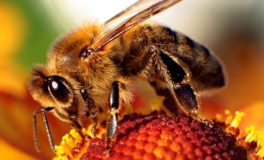An English summer doesn’t seem complete without the gentle hum of bees and a flash of colour as a butterfly flutters by. If you’re looking for the key to attracting more pollinating critters to your garden, then you have come to the right place. The TurfOnline team have put together some ideas on how to attract butterflies and bees to your garden.
Here is a brief rundown of the steps you can take to start attracting butterflies and bees to your garden:
- Provide flowers with easily accessible pollen and nectar
- Leave out a little pot of water for drinking and bathing
- Avoid using pesticides
- Arrange plants in groups
- Use succession planting for a long flowering period
- Think about providing larvae food plants for butterflies
What Do Butterflies and Bees Need?
If you want to learn how to attract butterflies and bees to your garden, you need to provide the things they need. That means food, water and if you want them to stay, shelter.
Food for bees and butterflies is simple, they need flowers with pollen and nectar that are easy to access. Butterflies also appreciate food for their caterpillars. If you have the right plant species in your garden, you may well become a nursery for baby butterflies.
Water is also fairly easy to supply. A shallow tray with marbles or stones and topped up with water daily is perfect. The marbles form little perches so that no unsuspecting bee can fall in and drown.
Here’s one idea for making a pretty garden bee drinker.
There are more than 250 species of bee in the UK and 71 recorded species of butterfly. Some are quite specialised in their needs, so it would be impossible to create the perfect conditions for all of them to breed in your garden. Nonetheless, you can improve your chances by adding certain features.
Bumblebees and some solitary bees like to nest in the ground, a little pile of sand might encourage them to stay with you, especially if it is on a green roof well away from any disturbances.
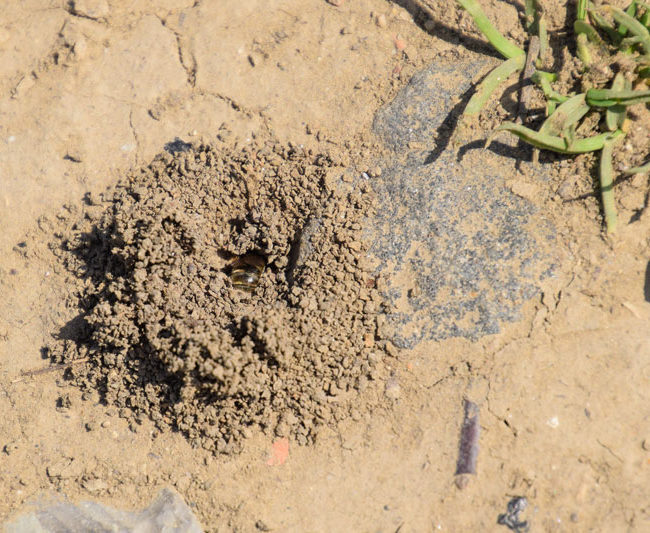
A bug hotel is fabulous for some bee species and Meadow Brown butterflies, areas of long grass are the tops. Every little helps, and if all you can do at this stage is provide food and water, then you can be almost certain that these beautiful creatures will visit your garden.
Does the Size of a Garden Matter to Butterflies and Bees?
It doesn’t matter if your garden is as big as a field or as small as a window box. When you are the size of a bee, everything in the human world must seem ginormous anyway.
What does matter is what you choose to plant in your plot. Let’s look at some of the criteria for butterfly and bee-friendly plants.
Which Plants are Friendly For Butterflies and Bees?
Imagine you are a bumblebee looking to gather pollen for your babies and nectar for energy. A bumblebee has quite a large abdomen and a big set of wings – it’s a wide load! There are two groups of bumblebees: long-tongued and short-tongued. Regardless of their tongue length, easy access to the centre of a flower is essential, so avoid choosing the “double” flowers – the ones with so many petals that you can’t see the pollen in the centre. Instead look for the sort of flowers a child might draw: a big yellow centre surrounded by petals.
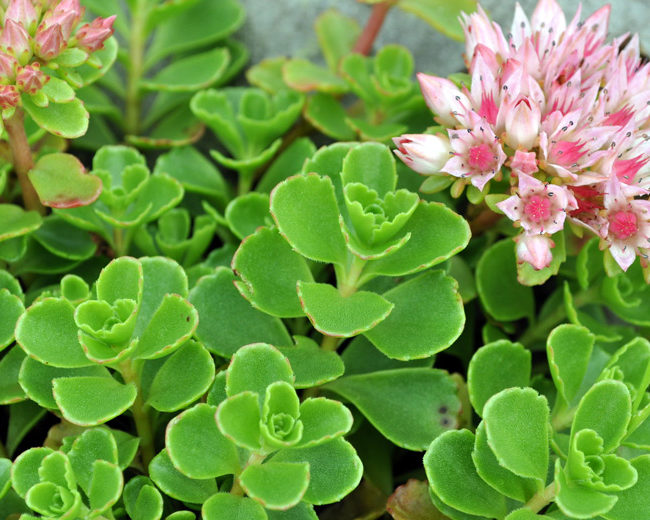
These sedum spurium flowers are made up of lots of tiny florets. Each floret is rich in nectar which is easy for butterflies and bees to reach. If you want to attract butterflies and bees to your garden, put sedum plants on your shopping list.
A great way to choose bee and butterfly-friendly flowers is to head to the park or garden centre on a sunny day and just watch. Take note of which flowers are getting all of the attention from pollinating insects and buy those, or take a picture and research them when you get home.
You can also look at the labelling on plants – most garden centres will tell you if a plant is pollinator-friendly. Some even group them all together in one place.
Succession Planting For a Long Flowering Period
In an ideal world, your garden will be bursting with bee-friendly flowers from March to October. You can achieve it quite easily if you plan ahead – even in a window box. Crocus is great for bumblebees in early spring, then there are early bloomers like such as alpine plants, herbs such as Rosemary, bright summer bedding plants and late bloomers like Dahlias.
Take some lessons from nature. A trip into the countryside at least once in each season will tell you which wildflowers are in bloom. Wildflowers have many benefits and are becoming more fashionable in gardens; not least because they are pollinator-friendly and easy to care for.
Find out more about our wildflower Meadowmat here.
Planting suggestions
Here are some of TurfOnline’s recommended plants for pollinators, along with the months that they appear:
- January: Butterbur – smells divine but can be very invasive – not a garden plant
- February: Snowdrops
- March: Crocus, Daisies – perfect for early flying bumblebees.
- April: Saxifraga granulata a snow-white alpine with nodding blooms. Perfect for green roofs. Also Cowslips and Primroses
- May: Honesty – easily grown from seed. Purple flowers and seed heads that look like silver pennies. Also Rosemary an aromatic herb with little blue flowers and strawberry plants
- June: Lavender. Great in the borders or pots and very popular with bees and butterflies. Wildflower meadows with mixed species are starting to look amazing now.
- July: Summer bedding plants such as Cosmos. Keep deadheading to ensure a succession of flowers.
- August: Nasturtiums. An annual plant with edible leaves. Some butterflies will lay eggs on these plants
- September: Dahlias – choose the ones with lovely open flowers. Sedums like S spurium look amazing at this time of year.
- October: Ivy – Not a favourite with every gardener but the flowers provide a much needed source of pollen for bees
- November and December – Not many butterflies or bees will be out foraging in the winter time. You can help by not disturbing
the spots where they are hibernating. That means minimal gardening for you!
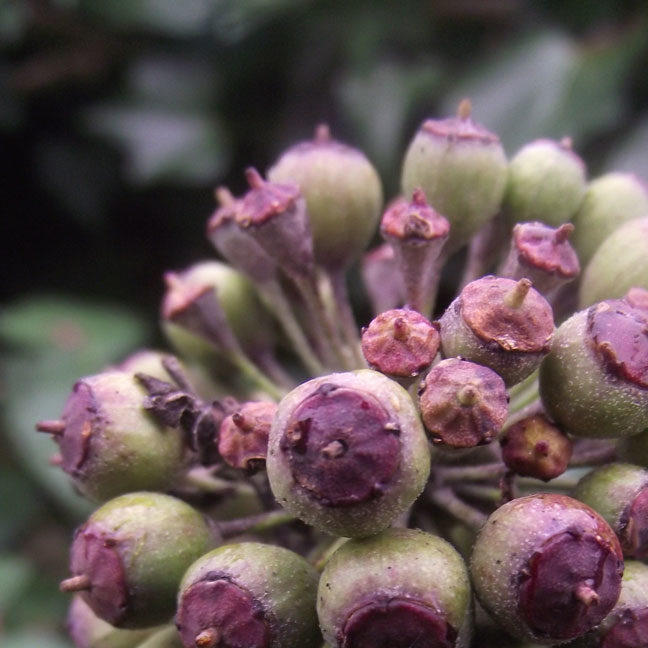
How to Avoid Using Pesticides
It stands to reason that if you want to look after butterflies and bees, you need to avoid using chemicals that could poison them. Experiment with things like companion planting and detergent sprays to keep unwanted garden bugs under control. You will probably find that by encouraging bees and butterflies you also support beneficial insects like lacewings and ladybirds. In theory, they will help keep aphids and other nasty pests under control.
How to Provide Food and Habitat For Butterflies and Bees
Two low-maintenance ways to bring butterflies and bees into your garden and encourage them to stay is to establish either a mini-meadow or a green roof.
Take a look at this video to find out more:
https://www.youtube.com/watch?v=Q7Glm-cyqsw
Related information
Find out how to create a green roof on a garden building here.
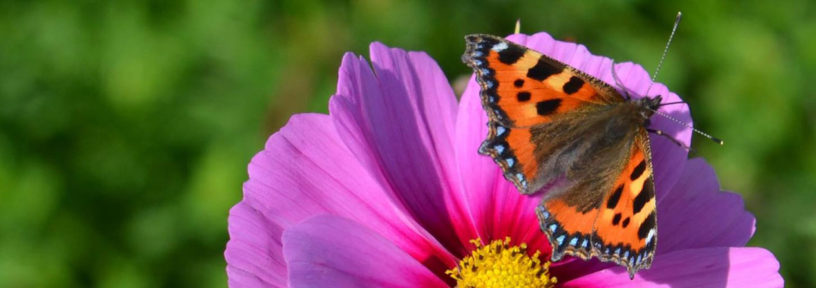
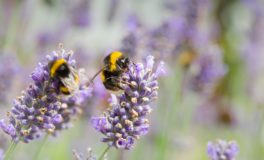 How do you keep bees on a roof
How do you keep bees on a roof 